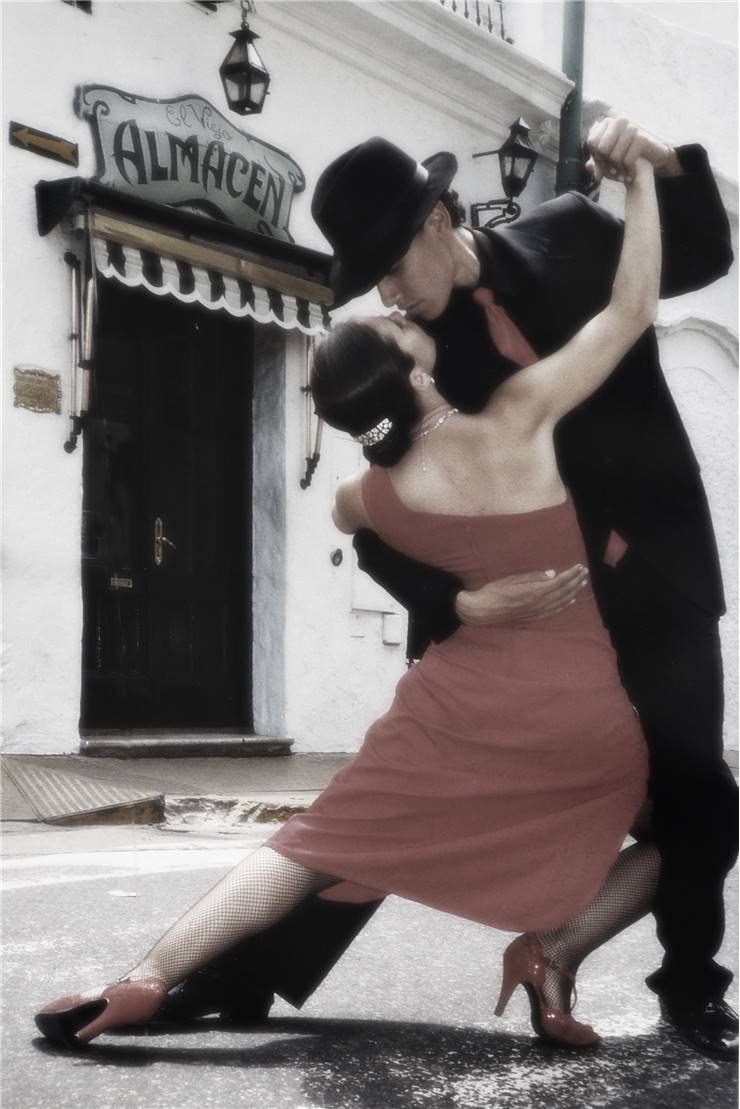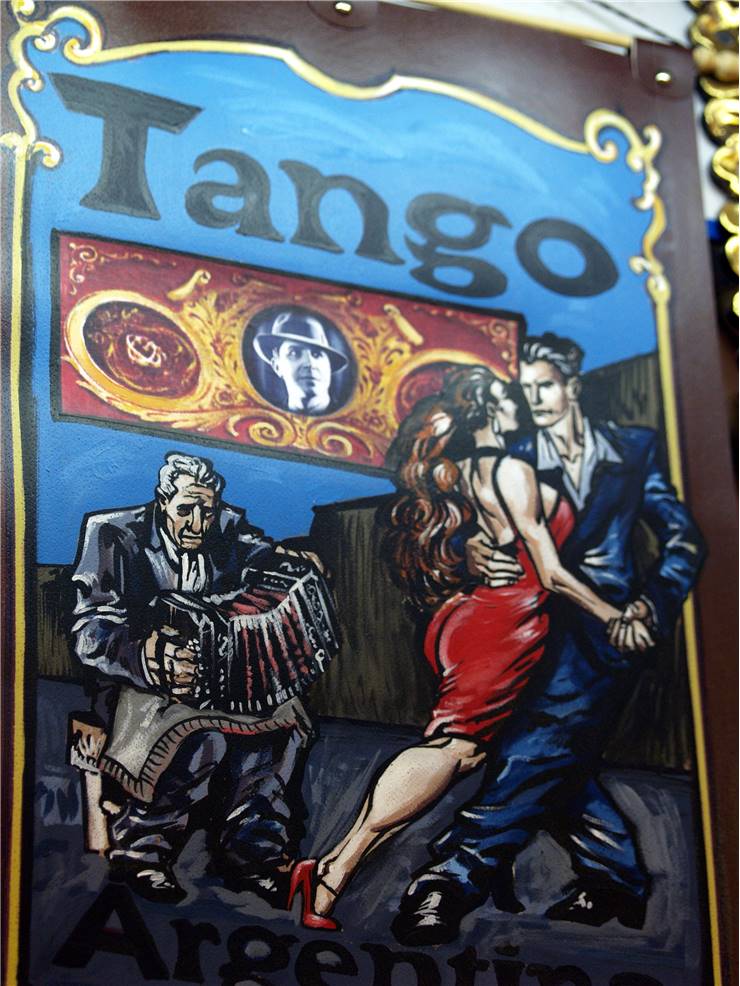Argentine Tango - History and Styles
Music of Argentina would not be the same without tango, an incredibly significant style of music genre and accompanying social dance that is defined by the feelings of 19th-century immigrants of South America who helped to infuse this musical style with elements of sensuality, nostalgia, sadness, and closeness. Birthed in the late 19th century in the booming territory of Río de la Plata, Argentine tango managed to quickly expand from its status as a music and dance style of the “unprivileged” and transform into phenomenon that has not only reached all four corners of the world, but has managed to have an significant influence on the history and social development of Argentina itself.
Argentine Tango uses 2/4 or 4/4 rhythm with two upbeats and two downbeats, and songs (fully melodic or with vocals) are usually consisting from two or three parts that are repeating in patterns such as ABAB or ABCAC. Tango is a music style that builds upon the foundation of the underlying beats, and it is very rare to find tango music that consists only of beats. Since it was created with the influences of several Argentine folk dances, music influences from African slaves and Jazz, both traditional and newly developed tango styles allow for some amount of improvisation in both playing and dancing. Argentine tango music is well known for its sudden changes in dynamics, use of staccato, glissandi slides of notes, melancholic but intense mood, and the distinctive presence of small button accordion called bandoneon. Bandoneon differs from traditional European “constantina” by having the ability to produce diatonic (non-chromatic, bi-sonorous or bisonoric) sounds, meaning that each key on both treble and bass side of the instrument can produce two distinct sound, depending on whether the bellows are contracting or expanding.

The expansion of tango’s popularity enabled many working-class composers and performers from Argentina to achieve international fame, including names such as Carlos Gardel, Ástor Piazzolla, Juan D'Arienzo, Carlos Di Sarli, Osvaldo Pugliese and Francisco Canaro.
Influences of such artists, changes in the social structure of Argentina and fashion styles enabled tango to morph into dozens of different styles, both domestically in Argentine and in the rest of the world. However, many of those styles are ‘additive’, meaning that they just introduced new elements while keeping many of the traditional tango elements untouched. This enabled tango to remain closely connected to the Argentine nation, preserving the original element of “lunfardo” - a mixture of expressions that were all infused into creation of this music by the millions of immigrants who came to the shores of Argentina and Uruguay (it’s poorer and working neighbourhoods more precisely) seeking a better life and infusing the soul of colorful, highly diverse and transitory lower class and marginalized population into music style and dancing that provided them a small measure of distraction and leisure.
Passionate, sensual and instinctive, Argentine tango remains the most captivating dance of modern time
History of Argentine Tango
Tango initially emerged as the “ music of the unprivileged’ in the working-class neighborhoods Buenos Aires and Montevideo in late 19th century Argentina and Uruguay, fueled by the mix of the countless European immigrants, influences from African slaves, and dances and music styles from native settlers of Central and South America. This mix eventually formed into a new musical genre and social dance that remained a close companion to the struggles and desires of the lower classes until it eventually managed to reach higher circles of Argentine society which has managed to recognize the appeal of this phenomenal music. Even though Tango music quickly managed to become a point of national pride in Argentina, outside of this country it led to morph into several new styles that are still practiced to this day.
An important point in the history of tango happened between 1890 and 1910 when many of the Argentinian artists strived produce stage shows, theatre presentations, and gramophone records were focused on the promotion of tango music and tango dance. This birthed new musical stars (both composers and artists) and led to the establishment of worldwide stars such as Carlos Gardel (who found great success in Hollywood), and Ástor Piazzolla who developed a new style of Tango Nuevo.
The traditional form of Argentine Tango is not only danced in its native country. This dance is regularly enjoyed in countries such as France, United Kingdom, USA and many others. It can also be observed in the multitude of films, TV series and opera productions.
Tango Music
Since tango as a style is very susceptible to changes and evolution into other related styles, it is not strange to see that modern tango is much more diverse than other dances. While the majority of people around the world knows about the most popular variant of tango music, the tango dance, this musical style managed to diversify into many forms that were popularized by everyone from individual artists to large ensemble orchestras who all had their own stylistic differences.
The popularity of tango music in Argentina has not only created this diversity, but also several specific tango music schools that are preserved to this day by several families who are working as orchestras that promote tango music and tango dance. Those families are Di Sarli, d'Arienzo, Troilo and Pugliese, and all are descendants of the Italian immigrant families who became part of rising tango scene in late 19th century.
While the so-called “The Golden Age of Tango” is now a distant past (it lasted between the 1930s and 1950s), the modern generations of Argentine Tango have access to many more styles of this music. This includes not only the tremendous exploits that Ástor Piazzolla has created in his tango nuevo style, but also many modern genres such as electro-tango, and tango that incorporates elements from other styles such as rock, hip-hop, blues, world music and others.
Tango Dance and Argentine Tango Styles
Tango dancing is incredibly diverse, which is attributed to the ability of this musical and dancing style to quickly adapt not only to musical styles in the place where it is practiced, but also social changes, clothing fashion styles (which may restrict usage of some dance moves) and even the amount of crowding in the dancing venues. Since tango music is based on clear and repetitive 2x4 pulse or beat, clarity, articulation and counterpoint marking, the resulting dance of such music is also very distinctive.

Modern versions of tango dance are danced with both open and closed embrace, or anywhere in between, with dancers responding emotionally and sometimes instinctively to the emotion found in the beat and music. Speed is also very important, with dancers transmitting their feeling of music quickly to their partner, who must react instantly. Footwork in tango dance is usually very close to the ground (rarely with weight being placed on both of the feet), but some tango dance styles include raising of the feet or entangling feet around the legs of dancing partners.
Traditional Argentine dance is performed counterclockwise , with dance pairs forming lines of traffic that cut not across, but flow around the dance floor. The basic elements of every Argentine tango dance are the embrace, walking, figures, dancing codes and the underlying type of music (traditional tango, Vals, and milonga).
While many international tango dance styles have managed to solidify their rules into fixed tradition (such as ballroom tango), the traditional Argentine tango still fully supports improvisation, emotional interpretation, and evolution that continues to change this dance into new forms even today.
Most popular Argentine tango styles are:
- Tango traditional
- Salon tango
- Tango canyengue
- Tango orillero
- Tango apilado/confiteria
- Tango nuevo
- Tango con corte y quebrada
- Tango de fantasía
- Show tango
- Stage tango

